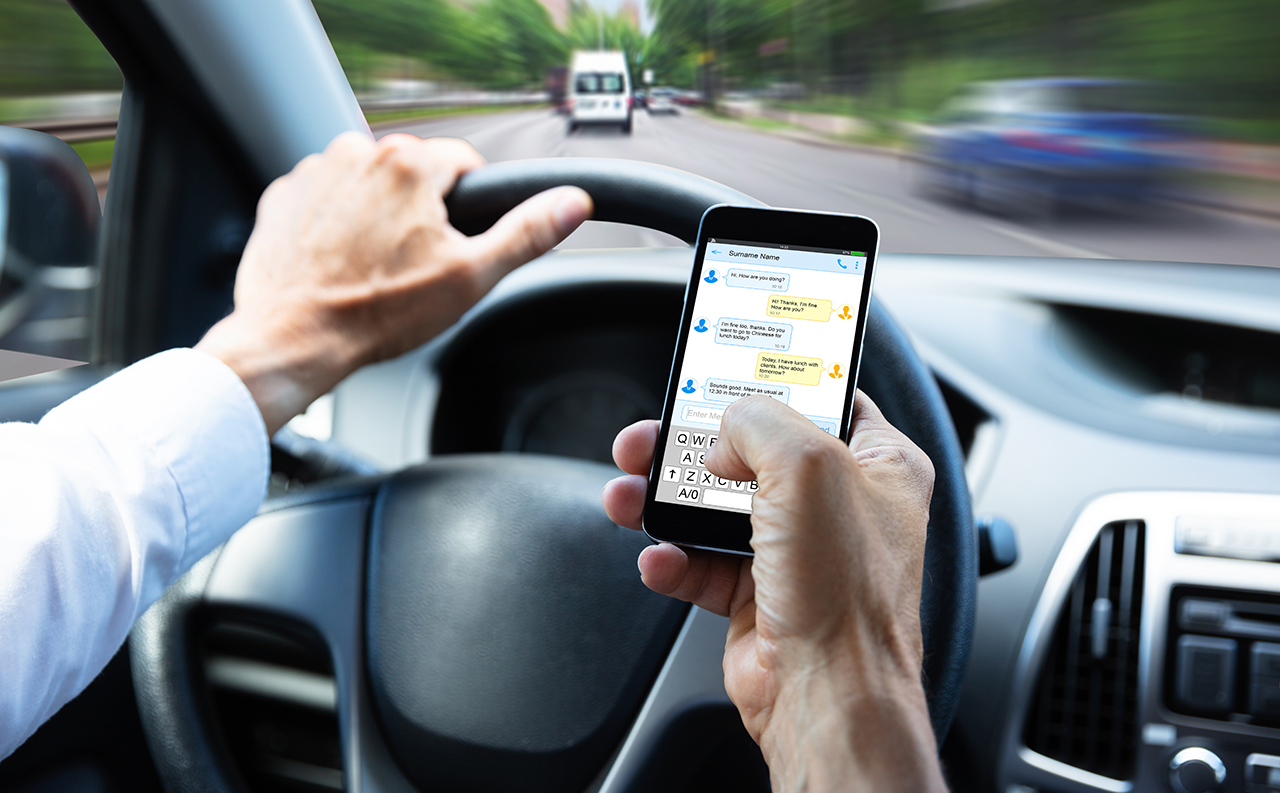When you start learning about Intelligent Transportation Systems (ITS) and connected vehicle technology, you may get the sense that you have been living under a rock. Why? Because there is a well-established
ITS government program devoted to researching enabling technologies for ITS, training people to accelerate adoption and deployment in smart cities, and collaborating with automakers, connected vehicle technology developers, and municipalities that are performing pilot programs.
While these programs will most certainly make use of 5G networks when they are fully deployed, it's important to note that the infrastructure is being installed in many major cities now, and a phased approach will be make use of existing high-speed networks, sensors and high-performance cellular routers as pilot programs complete testing and the infrastructure is rolled out.
The reason so much attention is going to intelligent traffic and connected vehicle programs for smart cities is that they will potentially save many thousands of lives every year.

The simple fact is that humans are fallible. We don't always make great decisions, and we don't always pay attention. People can become fatigued, confused, impatient and distracted — or worse — operate a vehicle under the influence of drugs or alcohol. These are known as "human factors." When technology and automation can detect and prevent an impending accident faster than a human can think, human factors will no longer be an issue.
The following are some startling facts from the
ITS.gov website which profiles several pilot programs. One of these is an initiative by the New York City Department of Transportation, which has been developing "Vision Zero" since 2014. The goal of NYC DOT's Vision Zero program is to stop preventable traffic injuries and deaths on New York City streets, based on the findings of an NHTSA (National Highway Transportation Safety Association) study.
According to the NHTSA review of New York City traffic accidents:
- Speeding was a factor in more than one in four deaths.
- Human factors were the critical cause in about 94% of all crashes while vehicle-related factors applied only to about 2% of all crashes.
- In Manhattan, 73% of all crash fatalities involved pedestrians compared to 14% nationwide.
- Senior citizens over the age of 65 comprise 12% of the population in NYC but about 33% of all pedestrian fatalities.
- In addition, the primary reason for crash-related deaths of children under 14 was from being struck by a vehicle.
Addressing human factors through technology, therefore, has an enormous potential to improve injury and death statistics, and make city streets far safer than they are today. The technology is not just a futuristic idea for the day when we have autonomous vehicles. Connected vehicle technology will deliver these capabilities faster than we might think. Let’s look at some of the applications that are under testing in smart cities today.
Intersection Safety: The Primary Use Case for ITS Projects

The primary objective of the research and pilot projects coming out of the Intelligent Transportation Systems and connected vehicle technology development is safety, particularly in intersections. The use cases will grow over time, but in congested cities where there is a lot going on at any given intersection, connected vehicle will have its most powerful wins in the near future.
With the triumvirate of government entities, technology companies and auto makers collaborating, the result will be installations of connected vehicle roadside units throughout major cities that support real time communication between vehicles, pedestrians and the traffic control system. It will work like this:
- Vehicles will be outfitted with connected vehicle technology.
- Pedestrians will be detected using sensors and Bluetooth.
- The roadside unit, powered by a high-speed cellular router (such as Digi WR54 or Digi TX54) will facilitate automatic braking of a vehicle that is on a trajectory to collide with another vehicle, a bicyclist or pedestrian.
These units and supporting communications technologies are being installed today in preparation for the near-future rollout of ITS throughout smart cities, once the testing and pilot programs are complete.
Another Example ITS Application: Combatting Wrong-Way Drivers

The city of Auburn Hills, Michigan, a fast-growing suburb of Detroit, is testing a new intelligent transportation system that is designed to combat an uncommon but deadly traffic hazard — wrong way drivers.
Crashes involving wrong-way drivers cause nearly 400 fatalities per year in the U.S. And that number, unfortunately, has been trending upward over the last five years. That’s why Auburn Hills is implementing a pilot program that uses a combination of sensors, connected-vehicle systems and a heat-mapping algorithm to detect wrong-way drivers and communicate the danger to other motorists.
According to a report in
Smart Cities World,1 the self-learning system defines the roadways and directions of travel, and can use highway message boards and text messages to quickly notify the drivers of at-risk vehicles of the wrong-way driver’s location, speed and direction of travel.
The city is installing the wrong-way-driver detection system as one part of what it calls a Smart Mobility Center and Transportation Hub, which will also improve traffic flow through a limited number of intersections in its initial deployment.
Other Applications for ITS Technology
In addition to providing smoother, safer commuting, new ITS programs will support a growing variety of applications across smart cities. For example, connected vehicle systems will be able to inform drivers about the availability of parking spaces in a given area. The deployed technology will also make it easier to provide basic services to the millions of people in the world’s growing megacities.
In many of these cities, a lack of conventional street addresses makes the delivery of emergency services problematic.
4 ITS and related location solutions will make it possible for emergency responders to get to victims more quickly and reliably, and will also make it possible for residents to receive other needed services and gain more reliable access to public transportation. Smart cities are deploying these systems today to take advantage of the range of ITS applications – and Digi is supporting the rollout with
cellular solutions that integrate and connect all of the disparate pieces.
Auto Makers Are Investing in Connected Vehicle Technology
Intelligent transportation systems installed in the public infrastructure can do wonders to improve safety and optimize traffic flow. But infrastructure is only half of the equation. To realize the full potential of ITS takes connected vehicles—cars and trucks that are capable of communicating
with the infrastructure. Connected vehicle technology is being tested and aggressively pursued by automobile manufacturers, such as General Motors.
By making sweeping changes to its fleet and investing heavily in both electric vehicles and connected vehicle technology, GM plans to be a leader in this arena, and in autonomous vehicles (also known as “self-driving cars”). GM is “racing into autonomy faster than any other carmaker,” reports
Bloomberg Businessweek.
2 In fact, the company spent $1.5 billion on the acquisition of a Silicon Valley startup that is a leader in autonomous vehicles. In the words of General Motors CEO Mary Barra, “This is what we really believe is the future of transportation.”
Urban Growth Drives ITS Market Growth

The adoption of ITS and connected vehicle technology is driven not only by a desire for greater safety and convenience, but as a matter of necessity in the world’s rapidly growing cities. A century ago, only 15 percent of the world’s population lived in urban areas. Today, more than half (55 percent) live in cities, and that percentage is expected to grow to 68 per cent by 2050.
With all that growth comes a corresponding increase in traffic and the need for technology to help manage the flow of people and goods. According to industry analysts, the global intelligent traffic management market, which was valued at USD 20.53 billion in 2018, is expected to reach USD 40.22 billion by year 2026, for a compound annual growth rate (CAGR) of 8.7 %.
3
For municipalities trying to squeeze the maximum value from limited budgets for streets and roads, ITS systems are a wise investment. They make it possible to increase the ability of road systems to handle increased traffic and growing populations while minimizing the capital costs of adding or rebuilding roads.
Disaster Preparedness — Is Your City Ready?

Recent wildfires in Australia are a grim reminder that the vehicle access and communication needs of first responders always have to take precedence in an emergency.
How is this done? In the U.S., first responders can have priority and pre-emptive communications through the FirstNet™ communications platform. FirstNet™ is a nationwide wireless network for the use of police, fire departments, EMTs and "extended primary" users to ensure they have clear lines of communications during large scale public emergencies. It occupies a segment of high-quality spectrum set aside especially for this primary category of public safety entities and gives priority to critical voice, text and data communications in situations where a spike in civilian cell phone use may jam cellular networks.
In addition to voice and data communications, the traffic management system aligned with FirstNet™ provides emergency routing information, so that the optimum path through a city is identified for first responder vehicles, using congestion data and vehicle location to adapt route guidance and traffic signal timing.
Read more about
FirstNet Ready solutions from Digi.
Digi - Your ITS and Traffic Management Technology Partner
Considering a move to smart traffic management, connected vehicle and other municipal mobility projects? Digi can help. With over 15,000 intersections installed, and growing, Digi has lengthy experience in rolling out ITS projects. Our team of traffic management solutions and deployment experts provide any level of guidance from needs assessments to complete development and deployment services.
Contact us to start the conversation.
1 Sue Weekes, Continental launches smart intersections with wrong-way driver detection in Michigan, Smart Cities World, December 30, 2019 https://www.smartcitiesworld.net/news/continental-launches-smart-intersections-with-wrong-way-driver-detection-in-michigan-4887
2 David Welch, Bryan Gruley, Mary Barra Risks it All, Bloomberg Businessweek, September 23, 2019
3 Matt Bird, Building the smart cities of the future: Think long-term and local, Smart Cities News, March 11 2019 https://www.smartcitiesworld.net/smart-cities-news/smart-cities-news/building-the-smart-cities-of-the-future-think-long-term-and-local-3948
4 David Rocks, Nate Lanxon, Location. Location. Location., Bloomberg Businessweek, September 3, 2018